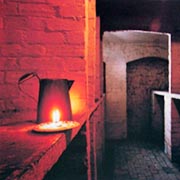10 Brunswick Square
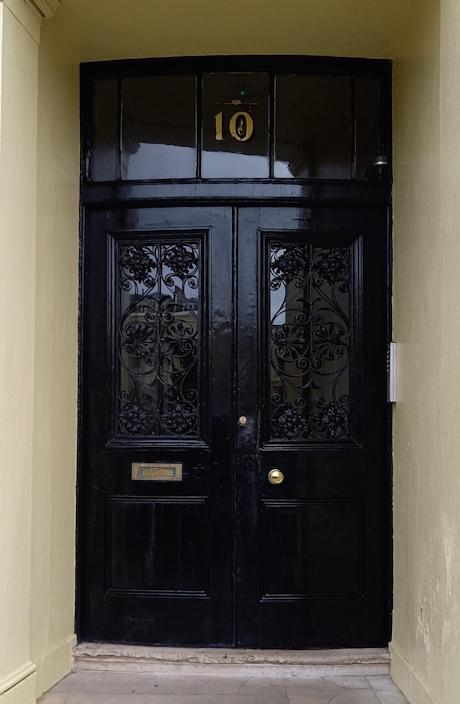
On the face of it number 10 is just another grand house in Brunswick Square.
However some of the past residents have a dark history and events have lent an air of sadness to its story. If you have ever visited the basement* you will perhaps get a sense of something other, maybe just a hint of darkness in its soul.
(*The basement of number 10 is owned by the charity that supports the Town House. It houses our workshops, is sometimes used for exhibitions and is included in our tour itinerary.)
The first family to live in the house were the Cunynghames (sometimes written Cunningham). Robert Cunynghame bought number 10 off plan from Cooper and Lynn, the builders who built number 13, and started living there in 1830. Robert’s wife was Maria Dundas, they both hailed from West Lothian in Scotland and they were married in Edinburgh in 1813; he was 43 and Maria was 26. The pair had three daughters Caroline, Frances (Fanny) and Mary.
The family all took great part in the social life of Brighton. Maria Cunynghame is frequently mentioned in the Fashionable Chronicles of the Brighton Gazette for her “splendid dinner parties” and Robert was granted a meeting with the King at the Royal Pavilion.
The Cunynghame daughters were also regular participants in the sport of archery with Caroline, the eldest, being particularly adept. There were four archery sites in Brighton in the 1830s including one called New Park which may well have been the newly opened Queens Park. Queens Park had previously been a subscription only Spa and Gardens which was only available to the general public on special open days.
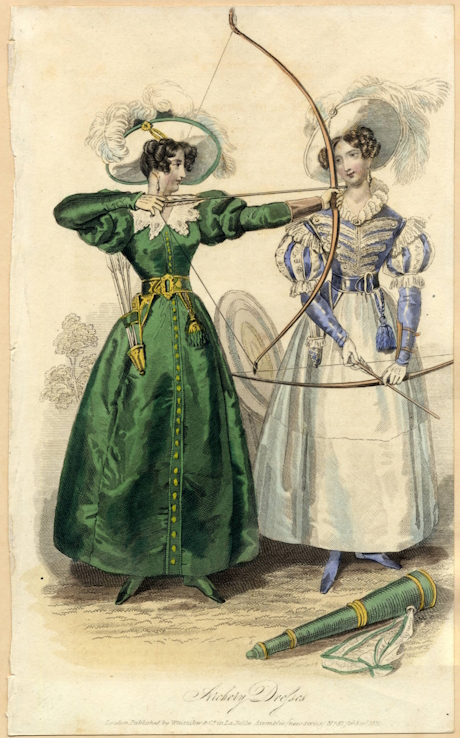
Young women engaged in the sport of archery in the 1830s, from claremont.edu
Robert died in 1836 aged 66 and is buried in St Andrews Church in Waterloo Street. A handsome plaque erected by Maria testifies to his good name. When she died in 1842, she was buried in the vault alongside Robert.
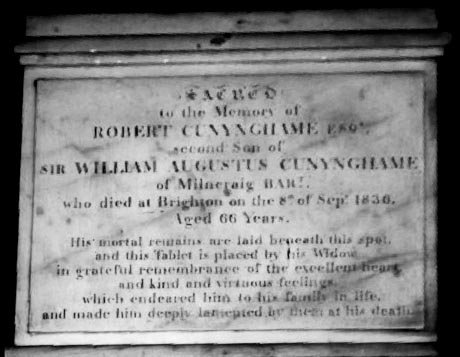
Robert Cunynghame Memorial in
St Andrews Church, Waterloo Street, Hove
The inscription reads:
Sacred
to the Memory of
Robert Cunynghame. Esq.
second son of
Sir William Augustus Cunynghame
of Milncraig Bart
who died at Brighton on the 8th of September 1836
Aged 66 Years
His mortal remains are laid beneath this spot
and this tablet placed by his widow
in grateful remembrance of the excellent heart
and kind and virtuous feelings
which endeared him to his family in life
and made him deeply lamented by them at his death
In 1842 the Hankeys, who previously lived at number 4 Brunswick Square, moved into number 10.
Thomson Hankey was born in 1773 the son of John and Elizabeth Hankey. The early part of Thomson’s career was spent in India but he returned to England in 1800 and in 1801 he married Martha Harrison at St Benets church in London. They had 13 children: eight daughters and five sons.
The Hankey family’s wealth was largely made by their involvement in the transatlantic slave trade and they owned several plantations in Grenada. The UCL Slave owners database gives a comprehensive account of their holdings and the amount of compensation they received when the trade was abolished in 1834. Thomson Hankey died in 1855 leaving £140,000 which is approximately £18 million in today’s money. His wife Martha died in 1862 aged 84.
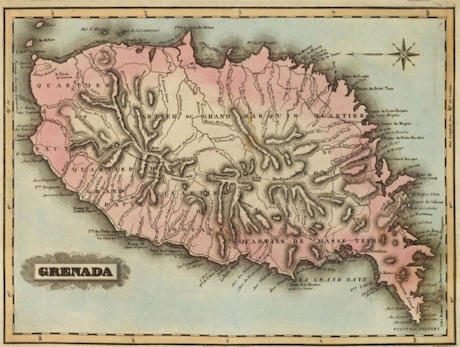
Map of Grenada, from 1823
Let’s see how some of the Hankey children fared.
Son Thomson junior, born in 1805, had a successful business career including being the governor of the Bank of England and as a Liberal politician elected as MP for Peterborough. A few years ago, the bank took down all the images of governors who had been involved in the slave trade. Thomson Hankey’s portrait was one of them.
Daughter Martha was born in 1814 and was living with her parents in the 1851 census at number 10. She married in 1857 at the age of 43. Her husband was artist Edward Tracy Turnerelli. Under the patronage of Tsar Nicholas I, before his marriage, Edward spent eighteen years living in Russia visiting and sketching places in remote parts of the country.
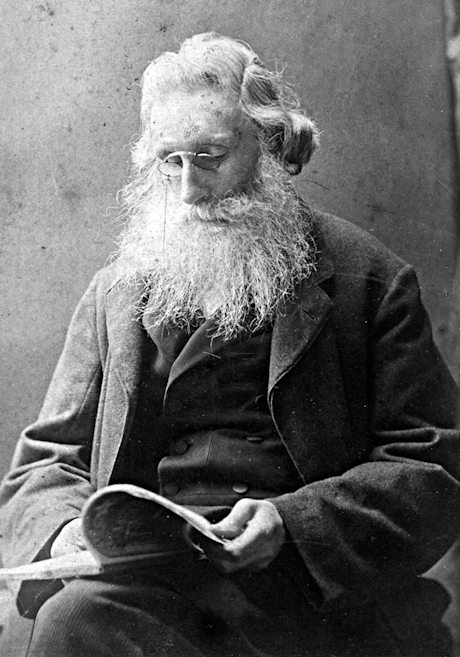
Martha’s husband Edward Turnerelli
Turnerelli and Martha settled in Leamington Spa where he became a noted advocate of the Conservative party and was often considered a bit of an eccentric at the time. However, the Leamington Historical Society have reconsidered his contribution and have some additional fascinating information on their website.
Albinia was born in 1808 and at the age of 23 she married James Craig Somerville, a doctor. James died in 1847 at just 48 years of age. They had one child, William born in 1836, who died aged 21 in India of a fever while serving in the Bengal Artillery. In 1854 Albinia married again to Henry Revel Spicer a man 22 years her junior. In 1860 they were living at 77 Montpelier Road Brighton and in the 1871 census they were in Broadwater near Worthing. Henry is described as having an income from dividends and houses. Albinia died in 1880 aged 72.
Isabella was born in 1809 and aged 28 married a clergyman, William Howard. She lived all her married life in Norfolk. The couple had seven children. What life was like for Isabella as a clergyman’s wife we can only imagine but she had periods in and out of a lunatic asylum and spent the last five years of her life in Catton Grove Lunatic Asylum, Norfolk. It is interesting to note that in the 1881 census when she is in the Asylum there is another clergyman’s wife also resident. Perhaps this is telling us something about the stress of such a life. Isabella died in the asylum aged 75.
Let’s just briefly look at two of the many people who made the life of the Hankey family run smoothly. At the time of the 1851 census there were 11 servants listed at number 10 Brunswick Square. All were described as HS, meaning house servants, although there would have been a wide variety of roles spread amongst them.
Avis and Jonathan
Avis Towney from Hertfordshire and Jonathan Frisby from Leicestershire were both born in 1821. Perhaps a glance across the table when eating supper in the servants’ basement or maybe a gentle brush past in the corridor caused a spark. We will never know but we do know that they married on 6th May 1852 in Hove. Both were aged 31, quite late for the customs of the period.
The day of the next census in 1861 Jonathan and Avis are living separately in Manchester. Jonathan was working as a porter in the Bank of England and on the day of the census it was his registered address. It is likely that he had to live in as part of his role. Avis was living in Chorlton upon Medlock, Manchester with their little girl also called Avis aged six.
We could pause here to speculate whether Thomson Hankey Junior, a Governor of the Bank of England, maybe had a hand in securing Jonathan his job. It would be nice to think of some benevolence being bestowed on a former servant of his family.
Ten years later in the 1871 census the family are living in Islington. Jonathan is still a bank porter. But unfortunately, two years later he was dead at the age of 52.
In 1878 daughter Avis married Falconer Nailer. In 1881 they are living in Fishersgate near Brighton with their son Cecil aged one. Falconer is working as a timber merchant. Misfortune then visited the family as in 1882 little Cecil dies aged two and Falconer dies the following year aged 35.
However, these tragic events reunite mother and daughter and in 1891 widows Avis Frisby and Avis Nailer are living at 17 Guildford Road, Brighton. Avis Frisby is living off her own means and Avis Nailer is working as a milk dairy manager.
P S. The Hankey name lives on in Grenada. It was the practice of plantation owners to rob enslaved people of their given names and furnish them with the name of the manager or owner. A survey done in 2020 found 29 people living on the island with the name of Hankey.
After Martha Hankey died, the next resident was William Colgrave who had previously lived at both 15 Brunswick Terrace and 44 Brunswick Square with his wife Catherine Ann Sarah. William died in 1868 at 10 Brunswick Square aged 80.
After William came Henry Hawkes. Henry was a magistrate born in Lincolnshire. In the 1871 census Henry is living at number 10 with his wife Martha, daughter Elizabeth, two visitors and 6 servants.
Perhaps the most remarkable event of the Hawkes’ time at number 10 was reported in the Brighton Gazette which in 1874 records the suicide of George Wyatt, an 18-year-old footman. George was found hanging on a rail behind a door by one of the other servants. This most likely occurred in the basement area of the house where the servants lived and worked.
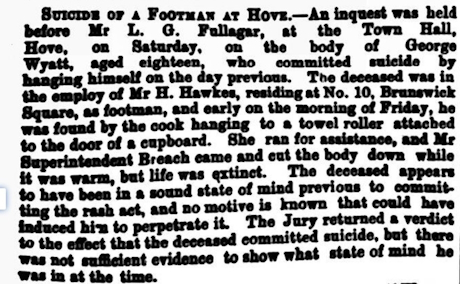
Newspaper report from the Brighton Gazette 27th August 1874
No reason could be found for young George tragically taking his life. He is buried in an unmarked grave in St Andrews Old Church.
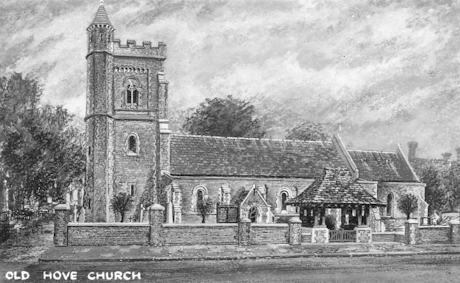
St Andrews (old) church, Church Road, Hove, where George Wyatt was buried in an unmarked grave
In the1881 census Martha Hawkes is in residence at number 10. Henry was staying with daughter Julia Davis in Huntingdonshire on the day of the census. Henry died in Northamptonshire in 1883 leaving £16,963 5s 11d approximately 2.5 million pounds today.
The local directory then lists A E Smithers living at number 10 in 1884 but he cannot be traced.
In the 1891 census William Fitzgerald Pilcher was living in the house with his wife Annette and six servants. The pair were married in 1873 at St Georges, Hanover Square. William was 42 and Annette (maiden name Schlotel) was 25. William is described on the marriage certificate as a gentleman. He had two registered addresses: 23 Grosvenor Place London and 10 Brunswick Square, Hove. William died in 1897.
Now a widow Annette Pilcher continues to live at number 10, registered as the head of the house in both the 1901 and 1911 census.
1917 Annette marries Adam Gordon Duff who is a bachelor and gentleman aged 67 and she a widow age 69. Adam died in 1923 after 6 years of marriage.
Annette died in 1936 aged 89 and among her bequests were £500 to the National Trust and £500 plus a £52 annuity and her wearing apparel (other than furs and lace) to her maid Frances Sims assuming she was still serving.
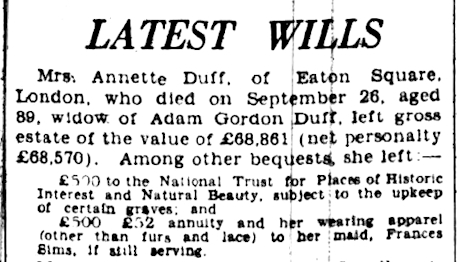
Yorkshire Post and Leeds Intelligence, 15th December 1936
The scope of this article was to finish the history of the house in 1820. However, it is interesting to note that from around 1925 number 10 became four flats with different residents. Also listed in the directory is caretaker Mr Frederick Nixon. It’s possible that in this role Frederick lived in the basement. Over the years occupants came and went from the flats but Frederick appears to have remained caretaker until 1960 when his wife Mrs D Nixon takes over. She is still listed as caretaker in 1964.
It would appear that perhaps the Nixons lived in the house longer than any of the previous residents.
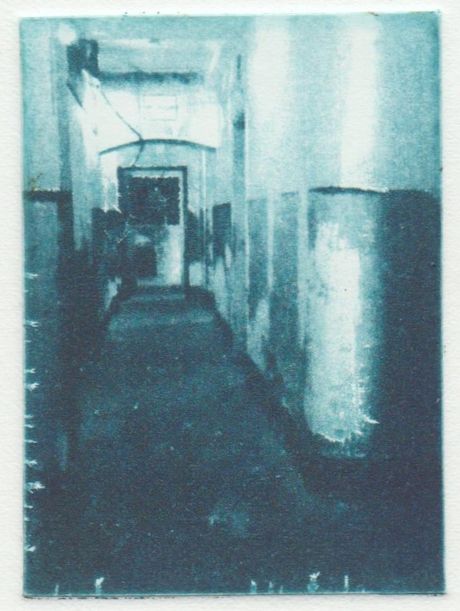
Jill Vigus: Etching of the Basement at No.10 Brunswick Square
Research by Jill Vigus (February 2024)
Return to Brunswick Square page


